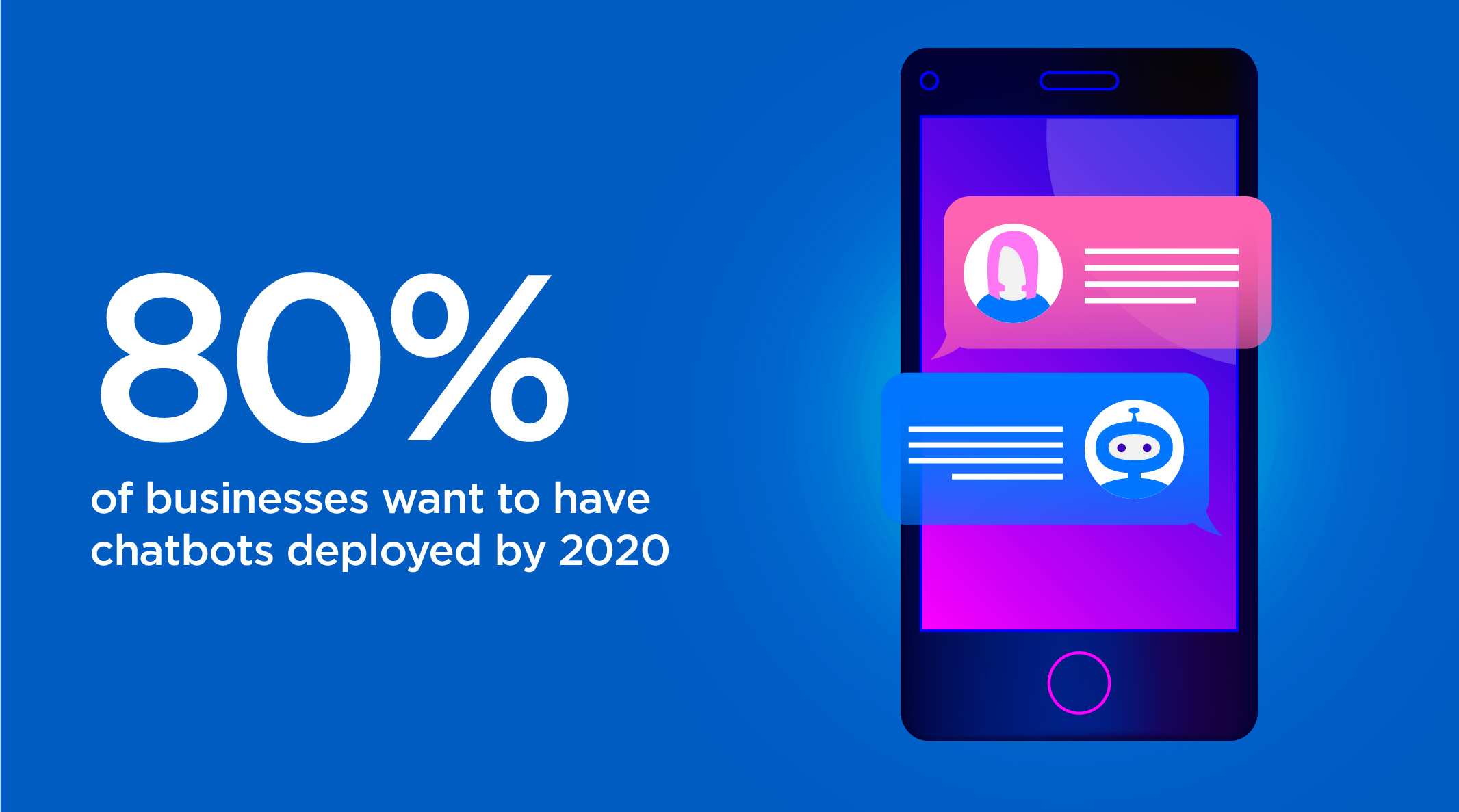Robots Ate My Marketing: Is a Chatbot Right For Your Business?

As AI technology improves and more businesses adopt AI agents for customer service, the successful brands won’t be the ones who are first to adopt chatbots or the ones who use them the most aggressively. It’ll be the ones who know their customers the best.
In the U.S. we say “the customer is always right.” In Germany, it’s “the customer is king.” In Japan, “the customer is a deity.”
Whatever status one opts to bestow upon the customer, everyone seems to be in agreement: the customer is a big deal. The customer has power. This much is true. A business cannot survive without customers, so business can’t afford to make its customer unhappy.
Those sayings were coined in an analog world, where the customer was mostly a passive participant, and their interactions with a brand were relatively fleeting. Today, the customer doesn’t just interact with a brand—they experience a brand.
Across disparate channels on many different platforms on multiple devices, the customer and the brand are intimately involved in an ongoing conversation. It’s no surprise, then, that a recent survey by Digital Marketing Trends found that a majority of companies consider Customer Experience (aka CX) as today’s most exciting business opportunity.
That confidence reflects the reality of modern customer-brand relationships. Customers are picky in the brands they choose, and the data says they’re flocking to and sticking with brands that give them positive service experiences. Harris Interactive found that, for nearly three-fourths of customers, friendly employees or customer service representatives foster memorable experiences that improve retention. And a crucial bit of why this all matters so much: according to Bain, a 5% increase in retention can result in a minimum 25% profit increase. It pays to be nice to your customer, whether you consider them to be right all the time, the royal blood who rules you land, or a deity worthy of your prayers.

In 2011, IBM’s Watson computer bested the two most successful human Jeopardy! players ever over a two-day competition. (The game wasn’t very close, either.) Aside from pure entertainment value, the show was a harbinger of our future, where AI-powered machines were not only capable of mimicking human cognition but far exceeding our computational prowess.
IBM is undoubtedly a behemoth, and I’m sure they’d tell you that Watson is out there doing great things in the world. And we know that Alexa and Siri and Google Home are practically furnitures in our houses now – but smarter. However, immediately following Watson’s Jeopardy! win, you’d have been forgiven for thinking that, by 2019, human customer service reps would be an endangered species.
Not quite. AI hasn’t replaced human beings in the customer service space, although each year it gains more turf. In short, chatbots are on the rise and growing. Eighty percent of businesses want to have chatbots deployed by 2020, according to Oracle, and the global chatbot market is projected to be $1.25 billion by 2025.
Why are businesses bullish on chatbots? In real life, it doesn’t cost anything to be kind. But business is different. It costs quite a lot for companies to treat their current and potential customers nicely. For example, there are hard costs associated with hiring and training, and the average phone call with a customer costs a business approximately $7. Yes, being nice can get expensive. Chatbots promise a future where companies can save big on customer service costs and convert more leads into sales and more prying eyes into lasting relationships.
For a look at effective chatbot technology, let’s take a trip across the world to China. Alibaba created its AI customer service system AliMe in 2015 to help ease the load on its customer service staff during exponential growth. On Single’s Day in 2017, China’s biggest shopping day, AliMe answered 9 million queries, representing 95% of the company’s customer service activity on its e-commerce platforms. That’s efficiency and the future in action today.
AliMe handles everything from promotion (recommending products based on personal user data, shopping reminders,) to during- and post-sales service (acting as an intelligent shopping assistant, solving logistics issues like addressing and delivery, etc.). Could a tool as powerful as AliMe spell doom for human customer service workers? Not yet, in our opinion. While technology has always replaced human labor, the more immediate chatbot future is one of supplement, not a total replacement.
AliMe is a powerful tool, but it helps Alibaba’s customer service staff as much as it does Alibaba’s end users. AliMe’s uncanny ability to understand and process human emotion helps sort and prioritize its customer service inquiries, pushing urgent requests to the front of the line—where human customer service agents take over.

A bad customer service experience is anathema for consumers. There’s no question that some of the trepidation being felt by business leaders is that chatbot technology isn’t quite there yet. By their reasoning, it’s not worth the risk of losing a customer thanks to a confusing or subpar interaction. Thus, chatbots are employed as an effective piece of the customer service puzzle, a tool that helps both customers and staff.
So if you plan on deploying chatbots this year, there are some principles to guide your chatbot strategy:
- Determine the right platforms
Adding technology for technology’s sake rarely works out. Every brand must understand its customer journey and how they interact with the brand online. Aligning customer insights with your business goals can inform how you deploy chatbots. Chatbots can be used on a number of platforms, including your website, on social media, or chat/messaging apps, so figure out which platforms will provide the most frictionless customer experiences. - Consider where chatbots will provide the most value on both sides
Do you envision a chatbot helping out with general customer service? Sales? Marketing? Do you want chatbots making product/service recommendations? Before you decide to add a chatbot, it’s imperative to build a short- and long-term plan for the utility a chatbot will give to your brand, based on your business goals. - Give your bots a voice and tone that is on-brand
Consumers expect a consistent brand experience across channels. They demand that brands understand them, speak plain language and interact like humans do. You don’t want your bot to come across as inauthentic, or worse, robotic. Make sure your bot speaks and sounds authentic and reinforces your brand voice. - Chart the journey
Your customer isn’t interacting with your chatbot just for some good conversation. It’s a stop along their way to getting crucial information, or buying a product, or following up on a previous purchase. If you deploy a chatbot without understanding what your customer has done before chatting, and where the customer is expected to be led to after chatting, you’re risking that ever-crushing poor customer service experience. - Add a chatbot… but as a supplement, first
Having multiple ways to achieve marketing goals is a good rule of thumb in digital content. Your current CRM efforts likely depend on a few different inputs, depending on how aggressive your tracking is, but businesses are still utilizing forms that our prospects must fill out line by line. Drift, a U.S. based chatbot company, is decidedly on #TeamNoForms, but also understands that change is incremental. They suggest adding chatbots to already-existing static forms pages as a good way to ease into the transition. Drift says that a customer of theirs “saw a 50% uptick in demo conversions just by adding a bot onto their ‘request a demo page’, which already had a static form.”

Throughout history, consumers have opted for the faster, more seamless experience. That’s led businesses to invest in technologies that get the job done quicker than human beings, and reduce overhead. The chatbot is no different. Sometime in the future, we’ll be conversing almost exclusively with digital agents in our brand interactions. And that future may be closer than ever now. For good or ill, the technology and the business environment winds are blowing in that direction.
As AI technology improves and more businesses adopt AI agents for customer service, the successful brands won’t be the ones who are first to adopt chatbots, or the ones who use them the most aggressively. It’ll be the ones who know their customers the best. Chatbots are just the beginning of a new way of performing good customer service. As brands begin to add chatbots into their marketing, it’s imperative that they don’t lose sight of core branding and marketing principles. Perhaps the customer isn’t always right, isn’t king (or queen), but they will always be turned off by interacting with inauthentic robots.
If this article helped you, please help us by sharing it or recommending to a friend. Thank you!


